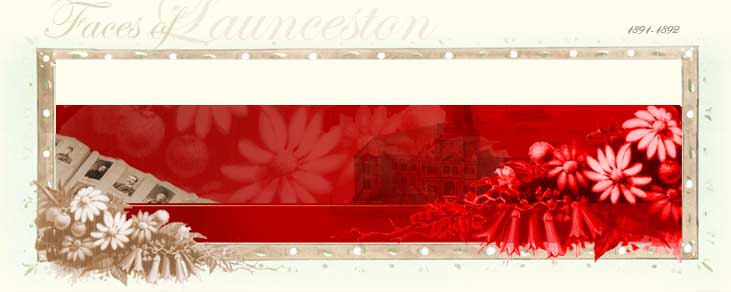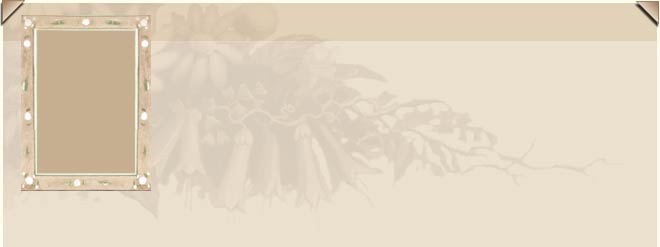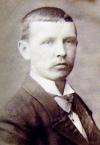Bruce William Tevelein was born in Deloraine on 31 Mar 1864, the eldest of six children of John Tevelein (1839-1917), a saddler, and Mary O'Brien (c.1838-1895) who were married at the Holy Trinity Church, Launceston, on 17 Mar 1863. Bruce spent his early childhood years at Westbury, where John had moved his family in the mid 1860s. In the early 1870s the growing family moved to Launceston where John assisted his aging father in his saddlery business in Charles Street. Later he took over the running of it; at first in partnership with his brother James and later by himself. The family lived in Canning Street and then at 123 Charles Street.
When Bruce had completed his education, he worked at the Daily Telegraph newspaper, firstly as a printer and later as a proof reader. Bruce married Alice Ewing Whitelaw, the daughter of James and Elizabeth Chamberlain Whitelaw, on 11 Oct 1891 at the Baptist Tabernacle in Cimitiere Street, Launceston. The couple hadthree children, all born in Launceston: Myra Evelyn in 1892, Doris Winifred, 1893 and Willoughby George, 1896. All were educated at private schools: Willoughby at Launceston Grammar and the two girls at Miss Wilson's Ladies' School, at 163 George Street. Their home during this period was located at 2 Stone Street, Launceston; they later moved to 39 Elphin Road.
During his younger days Bruce was a keen sportsman, playing football and cricket as well as competing in cycling races. After retiring from the playing field he continued to take an active interest in sport, assisting in various ways such as cricket scorer, timekeeper and starter. He also took an interest in the administrative side of the sports serving on executive committees at club, region and state level. He served as a committee member of the Launceston Bowling Club and the Tasmanian Bowling Association, captain of the City Cycling Club and vice-president of the Tasmanian Cyclist Union and the Northern Football Association.
In 1906 Bruce bought the first of the two cars he owned while living in Launceston (an eight horsepower De Dion) and joined the Tasmanian Automobile Club formed in Launceston a couple of years earlier. This car was the first registered in Tasmania after the Motor Traffic Act, which required registration of vehicles and driving licences, came into force in 1907. He was also the first person in Tasmania to be issued with a driving licence. Bruce competed in several of the Automobile Club’s annual reliability trials, which involved driving to Hobart and back over two days, and for a time served as the Club’s secretary. In 1910 he sold the De Dion and bought a more powerful car. Bruce was also associated with a number of speculative mining ventures; as a shareholder, director or auditor.
In about 1902 Bruce gained employment as Secretary of the Launceston Savings Investment and Building Society, a position he held until mid-1912. Shortly after being appointed secretary, he moved his family from their home in Elphin Road to 19 Paterson Street. In early 1912 Bruce embezzled two sums of money, totalling over £400, from the Society and falsified the books to cover his tracks. When the auditor requested the books for the regular audit, Bruce left Launceston travelling to Thursday Island, via Brisbane, using the alias Willoughby Brown. When the fraud was discovered, Bruce was traced to Thursday Island and arrested on board the Dutch steamer Van Linschoten on which he had travelled from Brisbane. Brought back to Launceston under police escort, he was tried on charges of embezzlement and forgery in the Police Court, Launceston, where he pleaded guilty and was committed to trial at the next criminal sittings of the Supreme Court. He again pleaded guilty at this trial and was sentenced to three years imprisonment.
Bruce had worked himself up from humble circumstances to a very responsible position and it would have been difficult for him to regain the position in life that he had forfeited through his actions. His wife and children would have keenly felt the shame and disgrace that had befallen upon their family. So after he was released from gaol, Bruce moved his family to Melbourne where they lived in Park Street, Parkville. He worked as a proof-reader at The Argus newspaper. After several years of this work, Mr Tevelein, who had a considerable knowledge of accountancy, was transferred to the commercial side of the paper, and did valuable work in that capacity for several years. He subsequently returned to the proof-reading department where he was appointed head reader, a position he held until his death in 1939.
Bruce’s wife Alice died on 25 Jun 1920. Following her death Bruce’s sister, Kate Julia Tevelein, came to Melbourne to keep house for him and two of his children. The younger daughter Doris had married Randolph Blair Forbes, a widow with a young son, in 1917. When he died in Oct 1924, leaving Doris a widow with three children, the youngest only six months old, Kate Julia moved to Wallan to help with her young family. They eventually returned to live at Park Street with Bruce until he died at their home on 28 Feb 1939.
His wife Alice was a sister of George and Percy Whitelaw, and aunt of Edgar Whitelaw, who are pictured in this Album.


